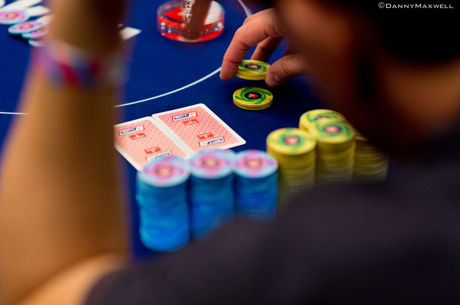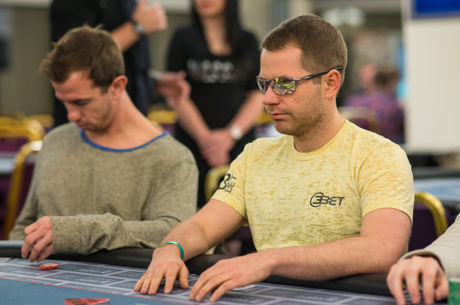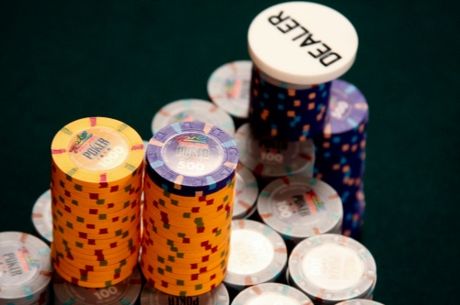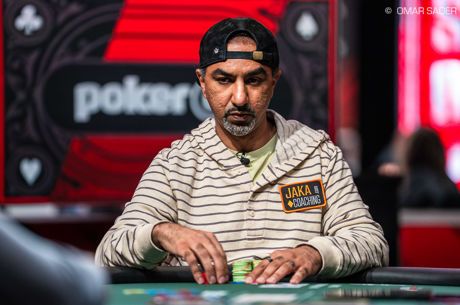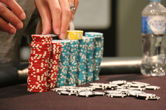Five Factors to Consider When Blind Stealing in Tournaments
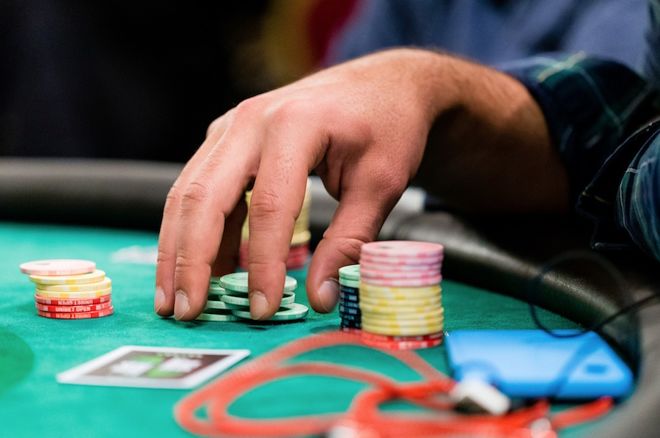
Blind stealing in poker tournaments can produce a number of positive outcomes.
I'm referring to those instances when a player open-raises before the flop with a primary goal of earning folds and winning the blinds (and antes, if in play) uncontested. That includes raising with medium-to-weak starting hands you don't necessarily want to play postflop, although any time you open with a preflop raise you should be thinking about how you want to continue should you be called or reraised.
The benefits of blind stealing begin with the addition of chips to your stack. Just one successful "raise-and-take" hand per orbit means you're accumulating exactly the cost of playing each round. You can add even more if your preflop raise gets called then you managed to take down the pot with a continuation bet on the flop �� all without having to show a hand.
Stealing blinds occasionally also can benefit you in terms of establishing a certain image among your opponents, earning you action on those instances when you're raising before the flop with legitimately strong starters with which you do want the hand to continue further after the flop.
I've additionally found that being on the lookout for spots to attempt blind steals keeps me better engaged in tournaments, especially deep-structured MTTs that can otherwise be a little tedious. I become more attentive to my opponents' preflop tendencies, which means I'm armed with even more information about them going forward.
Some players struggle with this important aspect of tournament poker, rarely going for an actual blind steal and instead only open-raising a small percentage of the time and only with the strongest starting hands. If you're in that category, here are five factors to consider when looking for opportunities to steal blinds.
1. The players in the blinds
From the first orbit of the first level, you should be looking to see which players at your table are playing a lot of hands and which players seem to fold more than others, mentally noting who the tight ones are. When the small and big blinds reach these less active players, those are the ones who you'll want to target with your blind steals.
In most MTTs there will be an opening raise before just about every flop, which means nearly every hand will yield you information about how willing players in the blinds are to give up and fold to opening raises. Pay attention to who is defending their blinds with calls or three-bets, as those will be less attractive targets for blind stealing.
Of course, it isn't a hard-and-fast requirement that there be super-tight "rocks" in the blinds when you try a blind steal. A lot of players understand the importance of position postflop, and thus are disinclined to play hands out of the blinds, meaning they'll give up a certain percentage of the time to opening raises.
2. Your position
A second factor to consider when attempting a blind steal is your position at the table. You're looking for spots to open the action with the first raise, and obviously when in early position (under the gun, or "UTG+1") you'll have that chance a lot. But attempting a blind steal from early position isn't generally recommended, since you'll need the whole table to fold to your raise for it to work, and if anyone between you and the blinds does fight back you'll be out of position should you stay in the hand for the flop.
Middle position blind steals can often work, especially if you have relatively selective or tight players sitting to your left. Again, though, you'll need to be cautious about open-raising with trash hands like 8?3? from these middle-position seats, as you don't want to put yourself in the position of playing bad starting hands from out of position after the flop too often.
The late positions �� that is, the hijack seat, the cutoff, and the button �� are generally the best ones from which to attempt blind steals, as you'll need fewer players to fold in order to be successful. Know, however, that these are the positions from which most players steal blinds, so among attentive opponents your open-raises from these seats might be treated with suspicion.
3. Your image
It's always also important to consider what kind of image you've established whenever attempting a blind steal. What have you done over the last couple of orbits? Have you been mostly folding hands, in which case an open-raise might be viewed as more likely to represent a strong hand? Or have you been active, playing a high percentage of hands, in which case opponents may be less ready to fold to another open-raise from you?
I've found myself in most tournaments seeking to establish a balance between appearing loose or tight. In fact, trying a blind steal right around once per orbit often earns me what is really an unwarranted image of being on the loose side since my natural inclination is to play a tight-aggressive game.
4. The stage of tournament
When blind stealing in MTTs, you'll also want to be mindful of the structure and what stage the tournament has reached �� early, middle, or late.
Generally speaking, blind stealing shouldn't be a very high priority early in a tournament, especially before the antes have kicked in. Depending on how deep the stacks are to start, adding a small and big blind to your stack might only mean increasing your chips by 1-2 percent. In fact, blind stealing during the first levels often has more to do with establishing an image than accumulating chips �� you'd be surprised how a few blinds steals early on can make you seem like an aggressive maniac to some players (even when that isn't who you really are!).
Blind stealing during the middle and later stages is more advantageous, since the rewards for doing so are greater as the blinds and antes increase. You'll also find players starting to tighten up as the tournament gets deeper, especially when the tournament gets closer to the money bubble, which means the likelihood of your blind steals working go up.
5. The stack sizes
Finally, always be mindful of stack sizes when attempting to steal blinds �� your own and the stacks of the players sitting in the small blind and big blind.
Particularly in those middle and late stages when the average stack becomes shallower, you'll want to be wary about trying to steal blinds from players who are short-stacked with less than 10 big blinds, as they may well respond with reraise-shoves. Know your opponents in these cases, though, as certain players will readily fold from the blinds even with super short stacks.
Also, of course, be wary about trying blind steals when your own stack has become too short to make risking even a min-raise such a smart idea. If you're down to 10 BBs and try a blind steal with a trash hand and are forced to fold to a reraise, you've recklessly squandered 20 percent of your stack. Also, when you're on the short side players aren't going to be so fearful of your opening raises �� another factor to keep in mind.
Conclusion
They say in poker that when it comes to correct strategy the words "always" and "never" rarely apply. Such is certainly the case with regard to blind stealing.
You shouldn't always try to steal the blinds whenever the action folds to you before the flop in a tournament. Nor should you never steal the blinds, as the benefits from doing so even just occasionally are significant.
As with other aspects of your tournament strategy, find that balance and start gathering those blinds and antes when you can. And keep these five factors in mind when you do �� don't steal blinds blindly!

